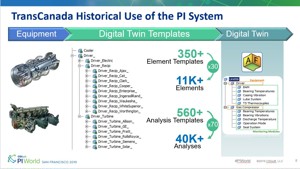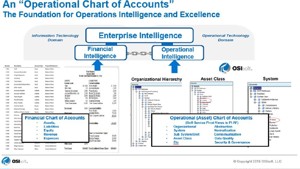Online Exclusive: 5 best practices for adopting new digital technologies in the HPI
The market place is filled with new technology buzzwords like “Big Data”, “AI” and “Cloud Computing” promising to revolutionize the HPI and leaving many feeling like they must be lagging in their adoption. Some HPI companies aggressively try to adopt these new, overhyped technologies, leading to failed projects that do not deliver sustainable business results – with significant lost opportunity costs. Yet there are many HPI companies that are taking a different approach for integrating new digital technologies that differentiates them from their peers with truly transformative business results. What are these leaders doing to successfully adopt new digital technologies? A review of these digital technology leaders in the HPI reveals the following five best practices.
Strong linkage between business and digital strategies
One of the key elements of successfully leveraging new digital technologies is remembering it is about sustainable bottom line impact and the 4Ms – “Make Me More Money…Safely”. All too often the integration of new digital technologies is led by the traditional IT organizations with a strong bias towards focusing on upfront costs over OPEX savings, resulting in efforts that are disconnected from business strategies. The most effective way is for a CEO to have strategic digital awareness and appointing a business leader with a strong operational background and knowledge of digital capabilities. This executive should be focused on integrating new digital technologies to deliver digitally enhanced operational excellence. This digital leader should have both traditional IT and OT oversight.
Leveraging a hybrid cloud approach
All too often with the traditional IT leadership, there is a strong and biased “cloud first” approach, not a “business first” approach. Yes, cloud computing capabilities offer great opportunities to reduce costs, enable a more self-serve, data-driven culture, and much more. However, there is a critical difference between critical operations data and traditional IT data environments. Critical operations require security and fit-for-purpose technologies that can effectively deal with required data security and governance as well as with the large volume, velocity, variability and anomalies found in critical operational data. Successful HPI companies employ a “hybrid” cloud strategy that have both an on-prem/single tenant cloud environment for critical operations as well as a more open and flexible IT cloud environment that enables the adoption of Software as a Service (SaaS) and other means to leverage the digital value chain.
Evolving the configuration of digital twins by the SMEs
New digital technologies have evolved to enable the self-serve configuration by the subject matter experts (SMEs) of digital replicas of physical asset classes, commonly called digital twins templates. Evolved over time in an agile method, these digital twin templates function like Lego blocks that are combined to form digital replicas of physical systems like a FCCU, ethylene cracker, an entire refinery, or an enterprise spanning multiple sites. The key advantage of using digital twin templates is the ability to empower the SMEs with capture of their knowledge and wisdom. Changes made in the digital twin templates are propagated at scale with consistency across all instances where the digital twin templates are in production. This powerful and transformative approach is illustrated in FIG.1.

Creating an “operational data chart of accounts”
The SME configured digital twins are used to create an enterprise asset hierarchy with the ability to abstract, contextualize and normalize a diverse tagging, asset, and units of measure (UOM) typically found in HPI. This enterprise asset hierarchy can be best described as the corollary to the financial chart of accounts that underpins financial intelligence. The operational or OT chart of accounts is the foundation to operational intelligence: when it is combined together in higher level systems, a data model based on the enterprise asset hierarchy forms the foundation to enterprise intelligence (FIG.2).

Define “analytics” and adopt a “layers of analytics” approach
The use of “analytics” and “AI” dominate marketing and sales conversations, yet many do not understand how to leverage these technologies to deliver business value. This is even more of an issue when applied to critical operations. Successful HPI companies leveraging new digital technologies must first develop an analytics framework that defines the types of analytics and then pairs appropriate digital technologies that support each type. The most effective framework is based on the following layers of analytics:
- Descriptive
- Diagnostic
- 1st level predictive (via formula or empirical correlations)
- 2nd level predictive (pattern recognition, Machine learning, etc.)
- Prescriptive with true artificial intelligence (AI)
Successful industrial operators first build an analytics foundation by leveraging a critical operations data infrastructure. Such data infrastructure should be designed to enable human analytics with self-serve access to contextualized operational intelligence as well as real-time streaming analytics that include 1st level predictive analytics. Once the analytics foundation is in place, effective HPI operators then move to more advanced analytics like machine learning and AI to solve a specific business problem with heavy SME involvement to augment the use of data scientists. This approach to analytics is illustrated in FIG.3.
In summary, leading HPI companies are employing the five best practices in their leverage of new digital technologies to deliver sustainable, transformative business results.








Comments